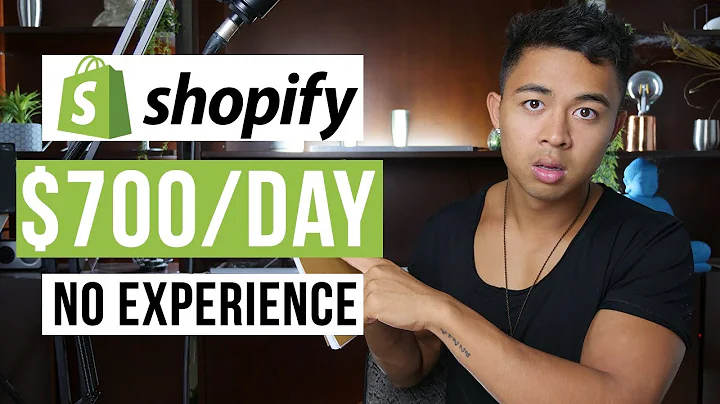Boost Your Shopify Store with On-Site SEO
Table of Contents
- Introduction
- What is SEO?
- Why is SEO important?
- On-Site SEO
- Finding the Right Keywords
- Keyword Placement
- Title Tags
- Meta Descriptions
- Header Tags
- Image Optimization
- Internal Linking
- URL Structure
- Mobile Optimization
- Site Speed
- Off-Site SEO
- Link Building
- Social Media
- Guest Blogging
- Influencer Marketing
- Local SEO
- E-commerce SEO
- Technical SEO
- Common SEO Mistakes
- Conclusion
On-Site SEO: The Key to Ranking Higher in Search Engines
If you're running a website, you've probably heard of SEO. But what exactly is it, and how can you use it to improve your website's visibility in search engines? In this article, we'll take a closer look at on-site SEO, one of the most important aspects of search engine optimization.
What is SEO?
SEO stands for search engine optimization. It's the process of optimizing your website to improve its visibility in search engine results pages (SERPs). The goal of SEO is to increase the quantity and quality of organic traffic to your website.
Why is SEO important?
SEO is important because it helps you get more traffic to your website. When people search for something online, they usually click on one of the first few results that appear in the search engine results pages. If your website isn't one of those top results, you're missing out on potential traffic and customers.
On-Site SEO
On-site SEO refers to the optimization of the content and structure of your website. It includes things like keyword research, keyword placement, title tags, meta descriptions, header tags, image optimization, internal linking, URL structure, mobile optimization, and site speed.
Finding the Right Keywords
The first step in on-site SEO is finding the right keywords to target. You want to choose keywords that are relevant to your website and that people are actually searching for. There are many tools available to help you with keyword research, including the Google Keyword Planner.
When choosing keywords, it's important to be specific. Instead of targeting broad keywords like "black boots," try to target more specific keywords like "black knee-high women's boots." This will help you rank higher in search results for those specific keywords.
Keyword Placement
Once you've chosen your keywords, it's important to place them strategically throughout your website. You should include your keywords in your page titles, meta descriptions, header tags, and body content.
However, it's important to avoid keyword stuffing. This is the practice of overusing keywords in an attempt to manipulate search engine rankings. Instead, focus on creating high-quality, informative content that includes your keywords naturally.
Title Tags
Title tags are one of the most important on-site SEO factors. They appear in the search engine results pages as the clickable headline for your website. Your title tag should include your primary keyword and be no more than 60 characters long.
Meta Descriptions
Meta descriptions are the short descriptions that appear below the title tag in search engine results pages. They should be no more than 155 characters long and should include your primary keyword. Meta descriptions should be informative and compelling, encouraging users to click through to your website.
Header Tags
Header tags (H1, H2, H3, etc.) are used to structure your content and make it easier to read. They also help search engines understand the structure of your content. Your primary keyword should appear in your H1 tag, and you should use H2 and H3 tags to break up your content into sections.
Image Optimization
Images can also be optimized for search engines. You should include descriptive alt text for each image, and you should use descriptive file names. You should also compress your images to reduce their file size and improve your website's load time.
Internal Linking
Internal linking is the practice of linking to other pages on your website. This helps search engines understand the structure of your website and can also help users navigate your site. You should include internal links in your content whenever it makes sense to do so.
URL Structure
Your website's URL structure should be simple and easy to understand. You should include your primary keyword in your URL, and you should use hyphens to separate words. Avoid using underscores or other special characters in your URLs.
Mobile Optimization
More and more people are using mobile devices to browse the web, so it's important to optimize your website for mobile users. This includes using a responsive design that adapts to different screen sizes, optimizing your images for mobile devices, and making sure your website loads quickly on mobile devices.
Site Speed
Site speed is another important on-site SEO factor. Your website should load quickly, or users will become frustrated and leave. You can improve your website's speed by optimizing your images, using a content delivery network (CDN), and minimizing the use of plugins and scripts.
Off-Site SEO
Off-site SEO refers to the optimization of factors outside of your website that can affect your search engine rankings. This includes things like link building, social media, guest blogging, and influencer marketing.
Link Building
Link building is the practice of getting other websites to link to your website. This can help improve your website's authority and can also drive traffic to your site. However, it's important to focus on quality over quantity when it comes to link building.
Social Media
Social media can also be used to improve your website's visibility in search engines. You should share your content on social media and encourage others to share it as well. This can help drive traffic to your website and can also improve your website's authority.
Guest Blogging
Guest blogging involves writing blog posts for other websites in your industry. This can help you build relationships with other bloggers and can also drive traffic to your website. However, it's important to focus on high-quality guest blogging opportunities and to avoid low-quality guest blogging networks.
Influencer Marketing
Influencer marketing involves partnering with influencers in your industry to promote your products or services. This can help you reach a wider audience and can also improve your website's authority.
Local SEO
Local SEO is the optimization of your website for local search results. This includes things like optimizing your Google My Business listing, getting listed in local directories, and using location-specific keywords.
E-commerce SEO
E-commerce SEO is the optimization of your website for e-commerce search results. This includes things like optimizing your product pages, using schema markup, and optimizing your product images.
Technical SEO
Technical SEO refers to the optimization of the technical aspects of your website. This includes things like optimizing your website's code, using structured data, and improving your website's crawlability.
Common SEO Mistakes
There are many common SEO mistakes that website owners make. These include things like keyword stuffing, using duplicate content, and neglecting mobile optimization. It's important to avoid these mistakes and to focus on creating high-quality, informative content that provides value to your users.
Conclusion
On-site SEO is an important part of search engine optimization. By optimizing your website's content and structure, you can improve your website's visibility in search engine results pages and drive more traffic to your site. However, it's important to remember that SEO is an ongoing process, and it requires time and effort to see results. By following the tips in this article and staying up-to-date with the latest SEO trends, you can improve your website's rankings and grow your online business.
Highlights
- SEO stands for search engine optimization and is the process of optimizing your website to improve its visibility in search engine results pages.
- On-site SEO includes things like keyword research, keyword placement, title tags, meta descriptions, header tags, image optimization, internal linking, URL structure, mobile optimization, and site speed.
- Off-site SEO includes things like link building, social media, guest blogging, and influencer marketing.
- Local SEO is the optimization of your website for local search results, while e-commerce SEO is the optimization of your website for e-commerce search results.
- Technical SEO refers to the optimization of the technical aspects of your website.
- Common SEO mistakes include keyword stuffing, using duplicate content, and neglecting mobile optimization.
FAQ
Q: What is SEO?
A: SEO stands for search engine optimization. It's the process of optimizing your website to improve its visibility in search engine results pages (SERPs).
Q: What is on-site SEO?
A: On-site SEO refers to the optimization of the content and structure of your website. It includes things like keyword research, keyword placement, title tags, meta descriptions, header tags, image optimization, internal linking, URL structure, mobile optimization, and site speed.
Q: What is off-site SEO?
A: Off-site SEO refers to the optimization of factors outside of your website that can affect your search engine rankings. This includes things like link building, social media, guest blogging, and influencer marketing.
Q: What is local SEO?
A: Local SEO is the optimization of your website for local search results. This includes things like optimizing your Google My Business listing, getting listed in local directories, and using location-specific keywords.
Q: What is e-commerce SEO?
A: E-commerce SEO is the optimization of your website for e-commerce search results. This includes things like optimizing your product pages, using schema markup, and optimizing your product images.
Q: What is technical SEO?
A: Technical SEO refers to the optimization of the technical aspects of your website. This includes things like optimizing your website's code, using structured data, and improving your website's crawlability.






















